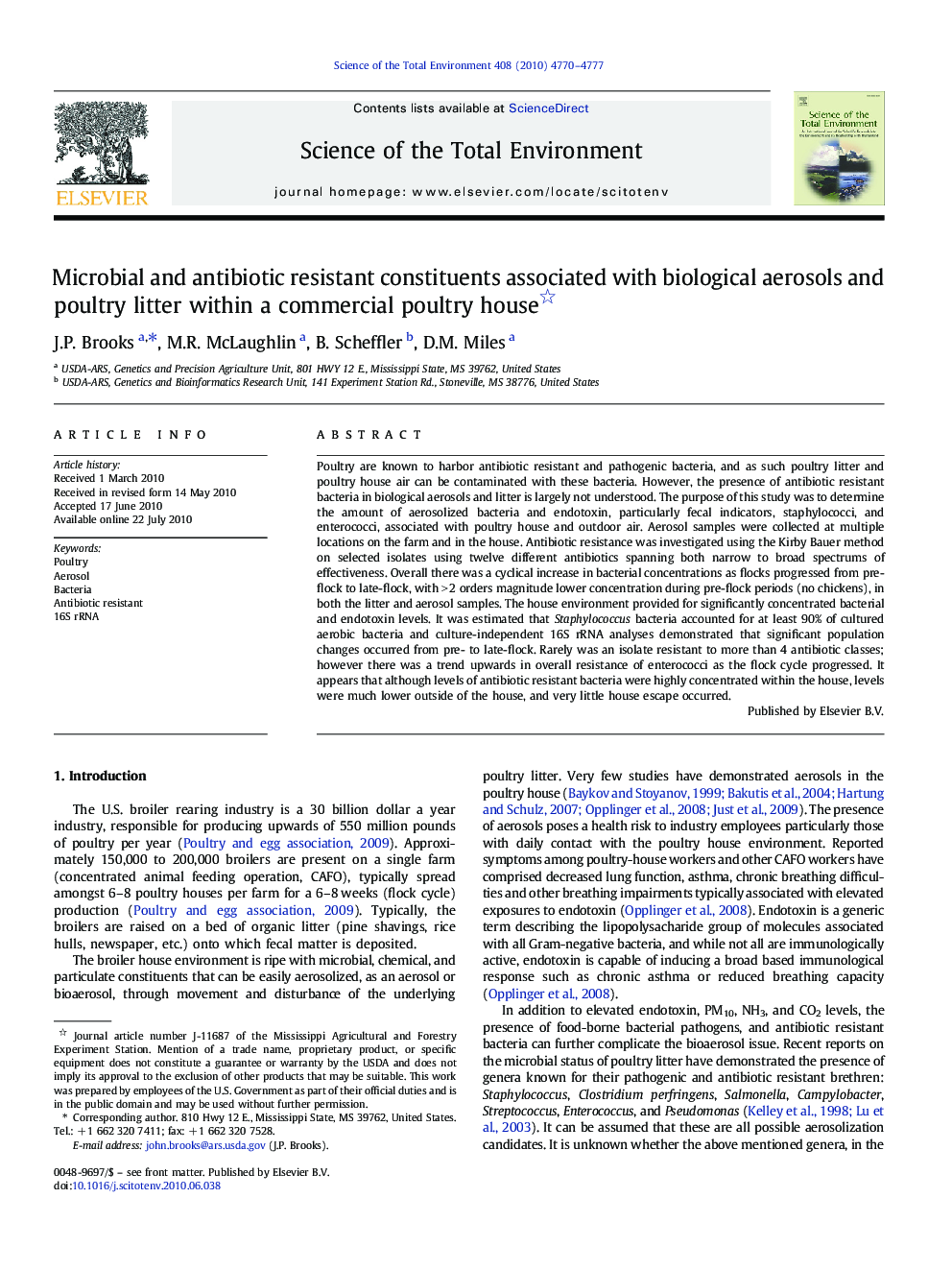| Article ID | Journal | Published Year | Pages | File Type |
|---|---|---|---|---|
| 4430934 | Science of The Total Environment | 2010 | 8 Pages |
Poultry are known to harbor antibiotic resistant and pathogenic bacteria, and as such poultry litter and poultry house air can be contaminated with these bacteria. However, the presence of antibiotic resistant bacteria in biological aerosols and litter is largely not understood. The purpose of this study was to determine the amount of aerosolized bacteria and endotoxin, particularly fecal indicators, staphylococci, and enterococci, associated with poultry house and outdoor air. Aerosol samples were collected at multiple locations on the farm and in the house. Antibiotic resistance was investigated using the Kirby Bauer method on selected isolates using twelve different antibiotics spanning both narrow to broad spectrums of effectiveness. Overall there was a cyclical increase in bacterial concentrations as flocks progressed from pre-flock to late-flock, with > 2 orders magnitude lower concentration during pre-flock periods (no chickens), in both the litter and aerosol samples. The house environment provided for significantly concentrated bacterial and endotoxin levels. It was estimated that Staphylococcus bacteria accounted for at least 90% of cultured aerobic bacteria and culture-independent 16S rRNA analyses demonstrated that significant population changes occurred from pre- to late-flock. Rarely was an isolate resistant to more than 4 antibiotic classes; however there was a trend upwards in overall resistance of enterococci as the flock cycle progressed. It appears that although levels of antibiotic resistant bacteria were highly concentrated within the house, levels were much lower outside of the house, and very little house escape occurred.
